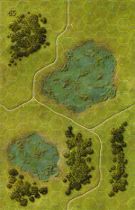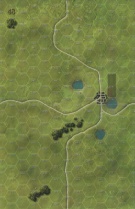|
Cut Off! Mouse That Roared #4 |
||
|---|---|---|
| (Attacker) Estonia | vs | Russian Soc Federative Sov Rep (Defender) |
| Formations Involved |
|---|

|
| Overall Rating, 0 votes |
|---|
|
0
|
| Scenario Rank: of |
| Parent Game | Mouse That Roared |
|---|---|
| Historicity | Historical |
| Date | 1919-01-17 |
| Start Time | 11:00 |
| Turn Count | 16 |
| Visibility | Day |
| Counters | 79 |
| Net Morale | 1 |
| Net Initiative | 2 |
| Maps | 2: 45, 48 |
| Layout Dimensions | 86 x 28 cm 34 x 11 in |
| Play Bounty | 222 |
| AAR Bounty | 223 |
| Total Plays | 0 |
| Total AARs | 0 |
| Battle Types |
|---|
| Breakout |
| Inflict Enemy Casualties |
| Road Control |
| Conditions |
|---|
| Hidden Units |
| Off-board Artillery |
| Scenario Requirements & Playability | |
|---|---|
| August 1914, 1st Ed | Maps |
| Mouse That Roared | Base Game |
| Introduction |
|---|
|
After two days of mopping up and preparations, the Estonians launched their own counteroffensive on 7 January 1919. The Soviet forces began to retreat faster than they had advanced. With the support of armored trains, the 1st Estonian Division liberated Tapa railway station on 9 January, followed by Rakvere on 12 January. As they approached Narva the Estonians devised a plan to eliminate the 6th Red Rifle Division rather than just keep driving them back. With the help of the British Royal Navy, a thousand-man Finnish-Estonian force landed at Utria on 17 January, to the east of the 6th Red Rifle Division, thus cutting off their retreat. It was hammer and anvil time. |
| Conclusion |
|---|
|
The trap was partially effective, dispersing the Soviets but not entirely destroying them. With the Soviet units opposing them scattered and disheartened, the Estonians liberated Narva on 18 January. Subsequently, the northeastern front stabilized along the Narva River. In just 11 days, the 1st Division had advanced 200 kilometers. Of course, this was a bad time for the Soviets who were losing ground on all fronts. Although the Bolshevik government firmly controlled the core of Russia from Petrograd through Moscow and south to Tsaritsyn, it was ringed with enemy armies. Admiral Aleksandr Kolchak and his small White army in the Perm area controlled a portion of the Trans-Siberian Railroad. In the south the White Armies occupied much of the Don and Ukraine. In the Caucasus near Kazan, General Anton Denikin had established a new White army. The British occupied Murmansk and most of the Black Sea shore, while they and their US allies occupied Arkhangelsk, and the Japanese occupied Vladivostok. This gave great hope to the Estonians. |
| 1 Errata Item | |
|---|---|
| Scen 4 |
Treat the east-west road as both a road and a railroad. (rerathbun
on 2019 Mar 15)
|

 MoRr003
MoRr003 

































